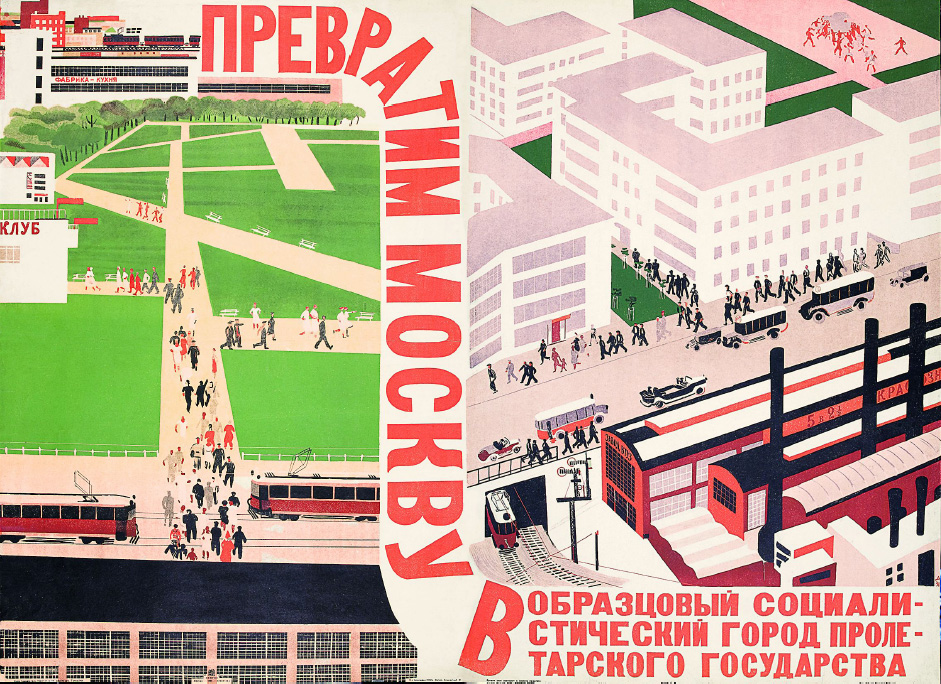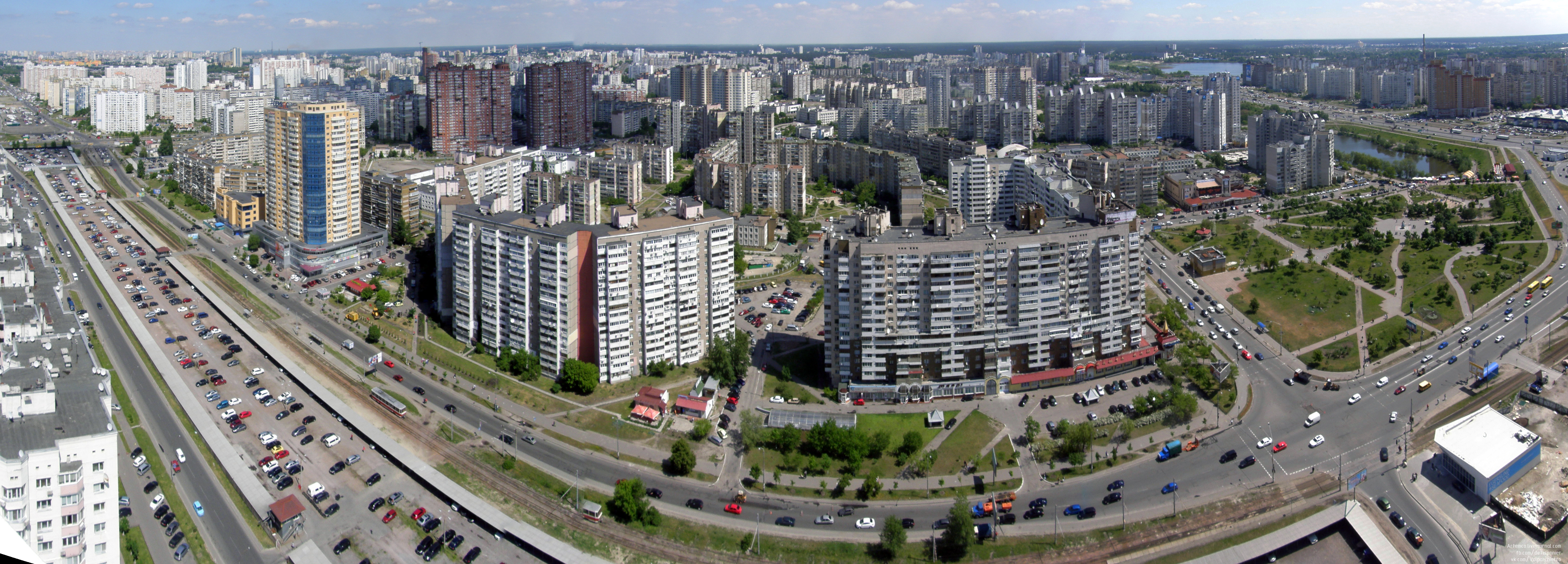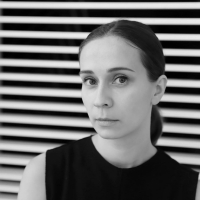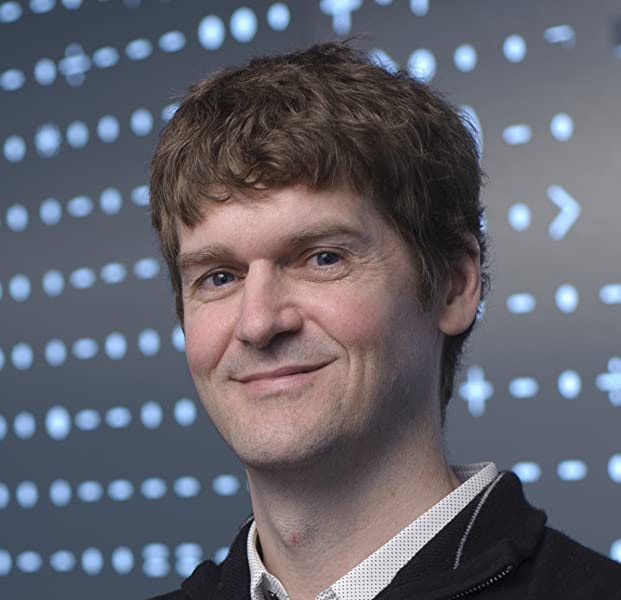In the first part of this three-part article, we explained some ways in which Kyiv’s new General Plan 2040 is promoting planning and design visions for the city that mirror the deficiencies of the past, including the Soviet era’s top-down, non-environmental, non-consultative approach to city design. We also explained how the General Plan mirrors deficiencies in some contemporary planning, including an over-reliance on private developers, a lack of appreciation for citizen initiative, and an automobile-dependent, road-heavy vision. We explain where the deficient solutions put forward by the General Plan 2040 come from and why we think Kyiv is still planning in a way that became obsolete 30 years ago. To do this, readers are invited to look into three dimensions of the planning in Kyiv that are central for our understanding of potential solutions to the dilemma in which Kyiv finds itself at the present time.
- Firstly, we explain the crisis of institutionalized planning in the post-socialist context: in other words, how independence did not provide Kyiv and Ukraine with the democratic, pluralistic planning that it needs.
- Secondly, we discuss the underlying values of the planners making today’s General Plan, and why those planners may not fully be cognizant of the values needed for a truly contemporary general plan.
- We close this chapter by outlining how these values of Kyiv’s planners informed the problematic principles promoted in GP 2040.
Crisis of (post)socialist planning
During Soviet times, general plans were instruments developed for what was, in essence, a totalitarian state. This state had a highly centralized «command» economy and also, as part of this totalitarian condition, nearly unrestrained use of natural and human resources. The key aims of Soviet planning evolved through time, and which remained inherently top-down until the end of the USSR, concerned location of ever-developing industry, supporting infrastructure (e.g. Metro, heating, roadways), and housing for the workers in what was purportedly a fully employed economy (Shaw, 1983; Miliutin, 1930). Cultural, natural and leisure amenities were often seen as the supplementing parts of the plan. The overall built environment, while not conceived through democratic processes, was at its best well-designed, equitable, and efficient. Many times, however, this was not the case (Meerovich, 2005, 2015).

The general plan, as a directive and all-encompassing document, was well-fitted for the aims of a totalitarian command economy. Plans gave comprehensive directives to municipalities and enterprises of how, when and where to build. In other words, the plan was a document outlining the physical register of state-building intentions. We must recall that in Soviet times, all construction was the product of state action. State resources were distributed according to 5-year construction plans aimed to fulfil the objectives outlined in the GP (General plan), in an obvious transfer from the five-year national economic plans promoted in the Soviet Union after 1928. After 20-25 years, planning measures typically prescribed that a new GP would be put into place. This revised general plan would direct new housing and industry construction as well as infrastructural development (Shaw, 1983).
Read more:
Kyiv’s new General Plan has failed. What will come next?
Using state land ownership, Soviet architects ideally aimed to promote social justice by distributing industrial (e.g. employment) and commercial and recreational facilities in an equal way, and by providing new, improved housing to the proletariat and party elites. Soviet general plans thus promoted principles that could serve as the baseline for the aims of Soviet planning: focus on the preservation of the common good, redistribution towards an equal quality of life for citizens and strategic long-term planning for future.
This vision, still seen in its ideal form in residential districts such as Rusanivka Island constructed in 1961-1974 on the left bank of Dnipro, was as challenging and even impossible to realize as it was ambitious in its ideals. Most general plans were realized only in part, perhaps up to 40%, and thus the ideal socialist vision for the Soviet city was never completed. Why? One reason is that such plans worked poorly in big and highly complex cities such as Kyiv, where multiple state companies and municipal institutions had to negotiate questions of land-use, provision of infrastructure and social amenities. In other words, large cities were simply too complicated to be controlled by a top-down command economy. In 1990, directly before the collapse of the Communist system, Alexei Gutnov and Wiatscheslaw Glazychev, theoreticians of urban planning in the USSR published a thorough critique of the foundational principles of socialist general planning. They argued that:
The idea that all the necessary information about the city can be expressed in the form of a General Plan is a relic of traditional economic logic. It leads to an assumption that the architect is able to be the specialist who can integrate all the heterogeneous information based solely on his professional knowledge and skill. (Gutnov & Glazychev, 1990: 300)
Such a vision of a planner-architect-engineer who could formulate, design, and administer total control over a totally designed city was a legacy of Modernism and even of pre-Modernism, dating back at least to the time of such General Plans as Daniel Burnham and William Bennett’s Plan for Chicago in 1909 (Ryan, 2017: 7). Yet despite this collapse of the Soviet system in 1990-91, we would like to stress that the idea of planners/architects being wholly competent in the development of a General Plan, and in having a prevailing role in devising the future city, is still dominant.
Today, responsibility for generating general plans, as well as the professional competencies for generating such plans, are vested into a single communal enterprise, named the Institute of General Plan. This Institute develops general plans, such as General Plan 2040, on its own, without prior national/international competition. The production of plans by a state agency, with little accountability, and whose expertise is uncertain, is a clear holdover from the Socialist era; these means of generating plans are inconsistent with international norms and best practices. For General Plan 2040, the Institute has formulated the main lines of inquiry and conceptual direction of the plan, as well as commissioned specific parts of the General Plan preparatory work, such as its road infrastructure analysis, its historic monument conservation overview, and its cartographic analysis. A surprisingly high number — 15 of the 18- sub-enterprises of the plan dealing with different areas of research are either communal or state-funded.
Given that the majority of general plans today in the democratic world are generated through competitive bidding processes, it is perplexing that private urban planning organizations, architectural bureaus, analytical centers were not invited to take part in Kyiv’s GP development. Nor were private or non-profit agencies permitted to participate in competitions or tenders for the commissions. In other words, no international company has overseen the General Plan 2040 work or worked as a consultancy agency. Why is this? Perhaps the contracting work for the plan is too poorly paid to be competitive at a market price to private or non-profit firms, or perhaps the Plan creation process is simply following the framework, which we showed was of socialist origin, of the previous General Plans. In other words, Kyiv’s planning institution, supported by the state, is drawing their legitimacy not from bringing different stakeholders together, but from adhering to traditional, outmoded prescribed principles of hierarchic planning.
Gutnov and Glazychev argued already in 1990 for an alternative planning structure, saying that:
(...) A new situation arose/came into being: the Development Program, that combines answers to the questions «what the city wants to be?», is integrated with the General Plan, that clarifies the main ways to achieve the goals formulated by the program.(A) new General Plan works as a guideline, while specific planning decisions should be based on a Program of Socio-cultural development. (ibid)
Unfortunately, up until now, there has been no strategy that informs and guides the creation of a spatial development plan.e. In the case of Kyiv, we have seen only the complete divergence of the principles of Kyiv’s city strategy and General Plan. While Kyiv and indeed Ukraine’s General Plan format and methodology was originally created under a totalitarian regime and centralized economy, we are today living in another era, one in which we strive to create democratic institutions and сitizen-oriented decision-making. To understand why this is not happening in Kyiv’s contemporary general planning, we need to look at the paradigms and values apparently shared by those planners in charge of the General Plan.
Values are the generator
The question is not whether planning reflects politics, but whose politics it reflects. What values and whose values it seeks to implement?
(Norton Long, an American planning theorist who first articulated a political nature of planning, 1958)
Today, planning approaches are a matter of choice. Contrary to Soviet urban planners who were ordered by the party to execute a General Plan within the bounds of state ideology, today’s urban experts can choose between a diverse range of planning approaches. This does not reduce urban design dilemmas, however. Given that today’s Ukraine is highly unequal (Mezentsev, Mezentseva, Pidgrushnui, 2015) planners have to choose whose interests to serve. This ethical choice is shaped and informed by the professional approach with which planners identify themselves, and this approach, in turn, creates either a closed or open process (Taylor 1998).
The GP 2040 and Kyiv bicycle concept represent respectively closed and open planning processes. Both projects were commissioned by the same organizations within the Kyiv city council and were developed within the same legal context, but these otherwise institutionally similar plans proposed different solutions for city infrastructure and had an entirely different workflow and process. The first, GP 2040, used participation as a pro forma event, while the second, the Kyiv bicycle concept, involved communities from the very beginning of the project state. To make a long answer short, these two plan documents reflect different paradigms of spatial development and of planning theory.

Below, we briefly describe how GP 2040 represents a closed planning process. Such a process is underpinned by the supreme role of the planner as a technocratic expert, and the plan is understood as a «secret» visual representation, to be understandable only by experts.
The «Expert» planner sees citizens as consumers, not as co-creators. Among other values of Soviet planning, the view of the citizen as a passive, quieted consumer perhaps explains Kyiv’s current planning practice today in the most dramatic light. In this understanding of planning as a closed process, Kyiv is understood as a homogeneous, single entity and as a result, the local interests of the city communities (hromadas) are completely ignored. GP 2040 does not demonstrate an idea of how to bring local-level discussion to key stakeholders at the level of administrative districts or the neighborhoods. Instead, a discussion is assumed to be unnecessary or merely superficial.
Public discussions and transparent communication with the citizens is a standard practice in planning today, yet such activities were neither included in the explanation of the terms of reference nor were present in the development of the GP 2040. It is ridiculous to read in the Explanatory Report that the hromadsky slykhannya (public hearings) conducted in 2011-2012(!) are being presented as a legitimation of planners’ adherence to the law on public participation (p. 4 of the Explanatory report). This is absurd because there was not even any commission for this plan at that moment — how could these participation sessions have been related to the plan? (Note that another version of the plan was instead under discussion at that time.) And how could an 8-9 year period having elapsed since this participation be seen as a relevant time-span for a participatory process? The public participation referred to in the GP 2040 is laughable, and the process is illegitimate. The current mechanism of General plan creation allows at most token participation at the very last stage of the decision-making process. This reflects a fait accompli approach where participation cannot effectively influence any of a plan’s central ideas.
But not only citizens are left out of the current planning process. We can observe that not a single person outside the sphere of the professional triad of «planner-architect-engineer» is presented on the main page of the GP 2040 document. Moreover, are no sociologists, political scientists, urban designers, or anthropologists in the core team among the 60 people working at the Plan Institute (p. 56 of Explanatory report). This is not only ridiculous but also a clear sign of an inheritance from the mid 20th century when no broad consensus needed to be reached, because planners` decisions were not only infallible but final. This situation is not an accident. Instead, it corresponds to technical and result-oriented planning.
The current planning situation in Kyiv can be opposed to an ethically-centred and process-focused approach. This latter approach was first conceived in the 1960s to mitigate deficiencies of modernistic values put into action through top-down planning. While this humanized planning paradigm has been widely recognized and accepted in many other countries (Bolan, 2017, Rodwin, 2017), in Ukraine the former approach is still being taken for granted. This brings us the current intolerable and absurd situation. Instead of critical reflection on the shortcomings and politically problematic circumstances of previous general plans and general planning practice during the past century, we persist in following the same flawed principles today. Ukraine’s technical and secretive planning apparatus even keeps the departed past a secret. It is already 30 years since Independence, and it took 20 years for the Institute of General Plan to reveal just a few maps from secret Soviet General Plans. In fact, the full text and maps of the General plans of 1936, 1947, 1986 are not publicly accessible even today (!) (Ponomariova and Ryan, 2020).
Soviet leaders of several decades ago, and private developers today, tend to favor the model of the expert planner because it promotes a closed, behind-the-door policy-making process of urban planning. While planning is actually an interdisciplinary techno-socio-political project, the creation of the most recent General Plan was masked by a ‘post-political’ attitude framing city problems as solely a technical, managerial challenge. (Swyngedouw, 2010: 226 as quoted in Geels, 2013) In summary, values of Ukraine and Kyiv’s planning approach are outmoded and create further obstacles to the desired democratic and sustainable city of the future. Moreover, the proposed General Plan 2040 is hypocritical, purportedly technical and impartial but in reality supporting planning ideas that favor selected private interests.
The latest attempts to whiten the image and defend the solutions of General Plan by writing defensive pre-paid articles are a clear testament to the inability of the planners to openly work with the wider public. Once an instrument that allegedly catered to the public good by providing accessible housing and public infrastructure, general planning has retained the secretive, non-participatory nature of Soviet times with the added disadvantage that it now additionally fosters speculative land development. This is a negative and regrettable evolution of the General Plan.
The City Oversimplified
This section of the article describes how the flawed principles guiding the current GP have led to the problems of seemingly infinite growth, disconnected planning and the overlooked role of public space described in Part 1.
First, the domination of quantity over quality. GP 2040 ignores the fact that planning is a social practice, and focuses solely on spatial solutions. As a result, quantifiable issues dominate over quality of life issues. The key problem lies in the fact that many of the most important qualities of the urban environment simply cannot be expressed through numerical values, and furthermore, that quality depends not on statistical, mechanical measurements, but on how a reflective, feeling person reacts to the city (Gutnov & Glazychev, 1990: 203).
The proposed GP contains almost no analysis of the quality of either housing units, urban spaces, or efficiency and comfortability of the transit system created under previous General Plans. In other words, the current GP does not provide a means of assessing its own recommendations. Yet citizens and experts might agree that some districts, such as Osokorky-Poznyaky for example, built in the 1990 to 2010 period according to the previous GP, provide poor urban quality of life. Why? Dwellers in these districts enjoy few opportunities for spending time outdoors, they possess limited local and city-scale transport options and even fewer opportunities for cultural entertainment and social interaction. Such statistically performative, but qualitatively dysfunctional districts, are one of the results of a general plan process that focuses on the numbers of m2 of housing and green space instead of diversity, human scale and accessibility. This focus on quantity, instead of quality, must change, but the current GP shows no signs of wanting to make this important turn.

Instead, the authors of the current GP calculate square meters of residential space per person without taking into consideration the existence of uninhabited housing (which provides no benefits for anyone, since it is not inhabited) and distribution of forms of possession, whether rental or homeownership (p. 51 of the Explanatory report). Since the GP lacks an understanding of the real allocation of residential space for people, the «space per person» figure is instead a pure endorsement of speculative construction practices, which can generate additional unsold or overly large units for the rich, increasing space per person at a technical level but not contributing at all to the quality of life or social equity of Kyiv. Reaching the `European norm` of 30m2 per person, in other words, can also happen if the 1% owns more luxury housing and the rest are driven into either into mortgaged property, or perhaps remain in older units, not improving their housing conditions at all.
As we do not know how much of the GP’s proclaimed residential space is in fact inhabited, any subsequent calculation produces a distorted image of a «lack of housing», or, by contrast, an abundance. The plan’s calculation of increased space per person also cannot consider the possible use of existing structures scattered around the city of which Kyiv has very many underused structures, but argues instead that «we need to build more» – a typical recommendation of speculative capitalism. The proposed ultra-densification of the socialist mikrorayons is not evaluated against the background of the upper-middle class suburbanization that is making Kyiv`s border irrelevant and creating an immense strain on already overloaded, auto-dependent infrastructure.
Second, social research is not present at all. A large amount of technical data in the General plan 2040 overshadows the problem of the plan’s poor analysis of the ways the city functions and what is needed to achieve an equitable and sustainable urban future. Being dependent on a totalizing conception of all-powerful technocratic planning, the GP pretends to understand all processes in the city, though using only a narrow urban planners’ perspective. Its authors rely heavily on spatial research and planning, whereas the expected implications of the GP on the life of the citizens are far-reaching and under-explored. One of the very few socially-relevant numbers in the plan, for example, is the proposal to include 20% of social housing in the new housing construction, but the methods, principles and background for such a solution are absent. For a country-wide overview of housing issues, consult (Fedoriv & Lomonosova, 2019).
As a result of the quantity-oriented approach, the plan lacks viable research to understand the city’s quality of life, conditions of working and commuting, and other important issues that are challenging to quantify numerically. As previously stated, the GP’s planners see themselves as experts, yet they did not bother to research which social groups need housing nor what are the typologies in shortage: student housing, co-living, terraced houses for sale or small apartments to rent. Planning Maps are inaccurate and insufficient: specific qualities of neighbourhoods, districts are not taken into account, for example. For the GP’s planners, these neighborhoods apparently all appear as homogeneous outskirts around the urban core, stripped of any peculiarities. But we know this is not the case — these neighborhoods are all distinct having particular social, economic and spatial qualities.
Urban mobility is yet another area in which the GP has shortcomings of thinking. One result of seeing people as numbers is a neoclassical transport planning paradigm aimed only to make everything more efficient: decrease travel time, reduce costs, etc. As has been long proved, such an approach fails to take into consideration interests of the different social groups, especially women’s routines (Gauvin et al, 2020; Peters, 2013). Quality and distances of walking and cycling are ignored as irrelevant or `insignificant` modes of transport. Instead, the GP prioritizes auto dependency.
Third, the GP’s forecasting is based on ancient realities. The GP’s approach to forecasting for energy use are based on current projections of the already outdated norms. These would definitely change in 20 years given the trend for more sustainable, localized and efficient use of resources. The GPs’ planning practitioners simply multiplied existing norms by the population growth and assessed the outcome as desirable. However, it is more than likely that energy consumption and production pattern will radically change in the following 20 years, rendering the projected numbers in the GP completely useless.
Why is this? Decarbonization is on the horizon. Ukraine`s 2050 Low Emission Development Strategy, following the Paris Agreement, highlights the need to decarbonize the economy and reduce the relationship between economic growth and fossil-fuel based energy consumption (Low Emission Development Strategy, 2017, p. 31). Apparently opposed to this agreement, in yet another sign of the GP’s disconnection from planning best practices, the GP proposes to double Kyiv’s overall electricity consumption and to increase natural gas consumption 74% within 20 years (p. 52 of the Explanatory report). While this forecasted energy use per capita is still lower than similarly-sized cities of the EU, most of which look forward to drastically limiting energy and electricity consumption in the future, the GP’s forecast is hardly explainable within the pressing global need to cut greenhouse gas emissions. The current projection is harmful, as it will allow for increases in air pollution, energy dependence and thereby increase global warming. Nor does GP 2040 provide land use allocations or clear policy incentives for solar/bio/wind energy creation. Instead, it prescribes the construction of new thermal energy plants that use fossil fuels such as coal and oil. It might not even occur to readers that the plan’s aggressive energy utilization case sounds like a Five-Year Plan in that the plan’s strategy is similar to Soviet electrification proclamations, setting a course for energy usage that we can not afford and do not even need.
We questioned the Kyivgenplan about what appeared to us to be aggressive, unsustainable energy forecasts. They replied that:
Consumption (of energy) is calculated in accordance with current regulations, taking into account the perspective of development of the city. A double increase in electricity or gas consumption does not mean a direct two-fold increase in the use of fossil fuels. For example, in Ukraine solar energy is developing rapidly and so on. The energy efficiency measures are listed in the action plan of the GP 2040.
However, even within the current growth of renewable energy sources, the GP’s energy forecast could mean up to a 50% increase in fossil fuel use and emissions if the energy generation pattern does not rapidly change. Renewable energy today makes up only up to 8% of electricity production in Ukraine, while around 25% of electricity is being produced in nuclear reactors. The rest of Ukraine’s electricity, unfortunately, comes from coal, gas and oil. In other words, Kyiv’s General Plan proposes to decrease energy independence, to continue unsustainable energy sourcing, and to turn away from sustainable, clean, environmentally friendly energy sources. The planners’ attitude is locked in the past and seems ignorant of the future. As has been known for quite a while:
The coal regime has so far resisted climate change pressures through a ‘clean coal’ discourse and the innovation promise of carbon capture and storage (CCS). (Geels, 2014)
If the problems of uncontrolled growth and contemporary norms were seriously taken into account we would see a different approach to the idea of new development all around the city. Instead, issues of re-use, renovation and maintenance would be put forward. But this attitude is absent in the new GP.
In summary, the GP 2040 ignores a substantial and dynamic transformation of the professional role and planning approaches in the world, suppressing participatory planning in favor of dated, obsolete technocratic, top-down planning. The Plan sets aside quality of life measures that cannot be calculated in statistics, instead relying on old-fashioned and therefore, inaccurate and misleading statistics that promise improvement but do not mean improvement of the lives of citizens. And the plan favors increases in unsustainable energy consumption, instead of promoting energy conservation and the transition, inevitable and desired in much of the rest of the world, of sustainable energy. Regrettably, the lasting image of the plan is one that retains the fundamental- and deeply flawed- beliefs of the previous planning era, retaining inherited shortcomings while being unable to build upon the good intentions of Soviet practice.
Is GP 2040, and by extension, Kyiv’s planning process, doomed? Or can Kyiv set itself on a new planning course that will place it in the top rank of progressive, future oriented European cities? We believe that Kyiv can indeed do this, and we propose a new approach to Kyiv’s planning that will permit such a forward-looking avenue to be followed. In the third part of this article, we are going to discuss an alternative planning scenario and the road to a desirable future for Kyiv’s city urban planning.
- Oleksandr Anisimov, researcher at Bureau online, MS student 4Cities Urban Studies program (University of Vienna), go.oleksandr.anisimov@gmail.com.
- Anastasiya Ponomaryova, fellow in Advanced Urbanism and Urban Studies and Planning (MIT), MS in Urban planning (KNUCA), Urban Curators, shtnastya@gmail.com.
- Brent D Ryan, Ph.D., MArch, Associate Professor of Urban Design and Public Policy and Head, City Design and Development Group, Department of Urban Studies and Planning (MIT).
References
Baker Tilly Ukraine (2018). Ukrainian alternative energy: slowly but steadily. Retrieved from https://bakertilly.ua/news/id44270
Bolan, R. S. (2017). Urban planning’s philosophical entanglements: the rugged, dialectical path from knowledge to action. Taylor & Francis.
Fedoriv, P., Lomonosova, T. (2019) Public Housing Policy in Ukraine: Current State and Prospects for Reform. Retrieved from https://cedos.org.ua/en/articles/derzhavna-zhytlova-polityka-v-ukraini-suchasnyi-stan-ta-perspektyvy-reformuvannia
Gauvin, L., Tizzoni, M., Piaggesi, S., Young, A., Adler, N., Verhulst, S., . . . Cattuto, C. (2020). Gender gaps in urban mobility. Humanities and Social Sciences Communications, 7(1). doi:10.1057/s41599-020-0500-x
Geels, F. W. (2014). Regime Resistance against Low-Carbon Transitions: Introducing Politics and Power into the Multi-Level Perspective. Theory, Culture & Society, 31(5), 21-40. doi:10.1177/0263276414531627
Long, N. E. (1958). The local community as an ecology of games. American Journal of Sociology, 64(3), 251-261.
Meerovich, M. G. (2005). Kak vlast’narod k trudu priuchala: Zhilishche v SSSR–sredstvo upravleniia lud’mi. 1917-1941 gg. S predisloviem Elena Osokina (Vol. 7). ibidem-Verlag/ibidem Press.
Meerovich, M. G. (2015). Urbanization Uniqueness In The Ussr. Vestnik of Tomsk State University of Architecture and Building. English version appendix, (1), 5-10.
Peters, D. (2013). Gender and sustainable urban mobility: UN Habitat Kenya, Nairobi.
Ponomaryova, A., & Ryan, B. D. (2020). Will Kyiv’s Soviet Industrial Districts Survive? A Study of Transformation, Preservation, and Demolition of Industrial Heritage in Ukraine’s Capital. Journal of Planning History.
Rodwin, L. (2017). The Profession of City Planning: Changes, Images, and Challenges: 1950-200. Routledge.
Ryan, B. D. (2017). The largest art: A measured manifesto for a plural urbanism. MIT Press.
Shaw, D. J. B. (2016). The Soviet Urban General Plan and Recent Advances in Soviet Urban Planning. Urban Studies, 20(4), 393-403. doi:10.1080/00420988320080761
Taylor, N. (1998). Urban planning theory since 1945. Sage.
Гутнов, А. Э., & Глазычев, В. Л. (1990). Мир архитектуры:(Лицо города). Мол. гвардия.
Дюжев, С. (2011). Зміст і значення стратегії генерального планування (до проекту Стратегії розвитку м. Києва до 2025 року). Містобудування Та Територіальне Планування, 41, 158–174.
Дюжев, С. А. (2011). Концепція стратегічного розвитку міста Києва: Проблеми містобудівної політики, теорії, методології, нормативно-правової бази. Містобудування Та Територіальне Планування, 39, 136–155.
Товбич, В., & Дюжев, С. (2012). Теоретико-методологічні проблеми генерального планування Києва. Досвід Та Перспективи Розвитку Міст України, 23, 64–73.
Мезенцев, К., Підгрушний Г., Мезенцева Н. (2014): Регіональний розвиток в Україні: суспільно-просторова нерівність і поляризація. Київ, ДП “Прінт-Сервіс”, 132 с.
Милютин Н.А., (1930). Соцгород. Проблема строительства социалистических городов. Москва: Государственное издательство РСФСР.





